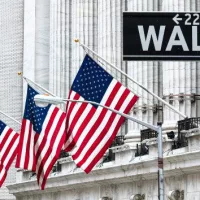
(NEW YORK) — Consumer sentiment ticked higher in July, marking two consecutive months of improved shopper attitudes as businesses navigated President Donald Trump’s latest tariff threats targeting dozens of countries. The fresh reading matched economists’ expectations.
The recent resurgence of consumer sentiment followed six straight months of worsening attitudes, according to University of Michigan survey data released Friday. Before the swell of optimism, consumer sentiment had fallen to near its lowest level since a bout of inflation three years ago.
Despite the new data, the measure of consumer sentiment remains 16% lower than where it stood in December, before Trump took office.
Year-ahead inflation expectations dropped for a second consecutive month, declining from 5.0% in June to 4.4% this month, the survey data showed. The anticipated inflation level would still mark a major increase from the current year-over-year inflation of 2.7%.
The new report on consumer sentiment came a day after the release of retail sales data that showed unexpectedly strong performance in June. Robust shopper appetites last month suggested that the uncertainty surrounding Trump’s tariffs hadn’t prompted households to stash extra income.
Consumer spending, which accounts for about two-thirds of U.S. economic activity, is a key bellwether for the outlook of the nation’s economy.
So far, key measures of the economy have largely defied fears of a tariff-induced downturn. The unemployment rate stands near a historically low level and job growth remains robust, though it has slowed from previous highs. Inflation has climbed over the last two months but it remains below where it stood when Trump took office.
Some analysts expect price increases to accelerate over the coming months as tariffs take hold, though many have acknowledged that the path forward remains unclear amid Trump’s fluctuating policies.
Typically, importers pass along a share of the tariff-related tax burden in the form of higher costs for shoppers. A host of major retailers, including Walmart and Best Buy, have warned of potential price hikes as a result of Trump’s levies.
Trump has rolled back many of his steepest tariffs over recent months, including a sky-high levy on China, the top source of U.S. imports. In recent days, however, Trump announced plans to slap tariffs as high as 50% on dozens of countries, including 25% tariffs on top U.S. trade partners such as Japan and South Korea.
The fresh levies are set to take effect on Aug. 1. In addition, a proposed 50% tariff on copper imports could intensify the impact of the country-specific levies.
Copyright © 2025, ABC Audio. All rights reserved.













